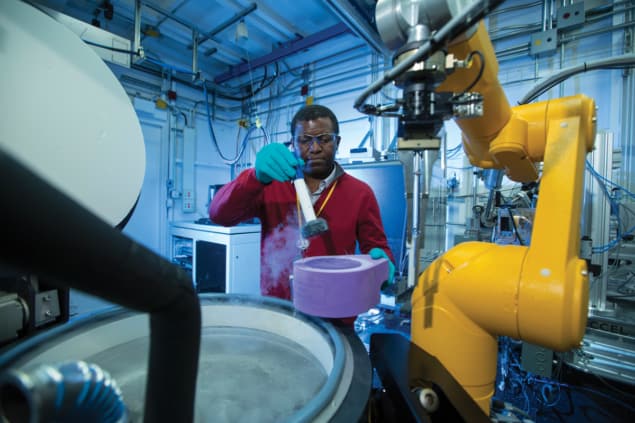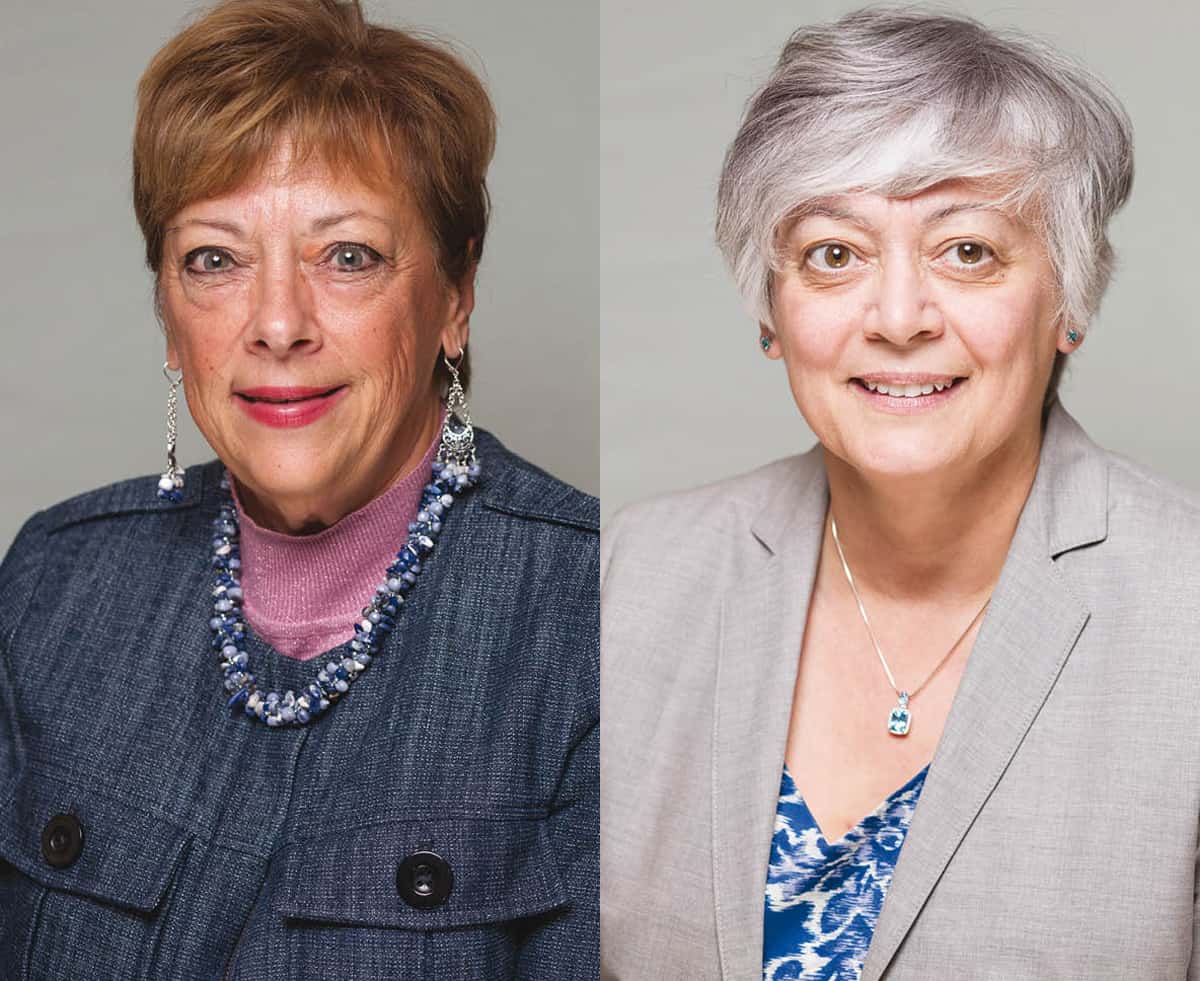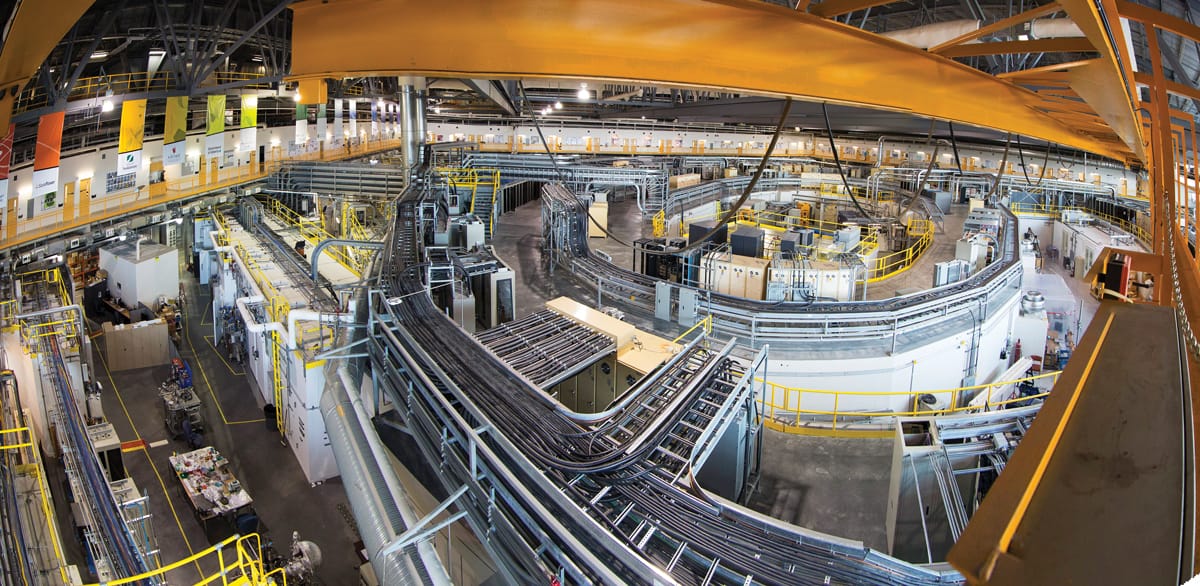Isabelle Blain is chair of the board at the Canadian Light Source (CLS) in Saskatoon, Saskatchewan, and is a former vice-president of NSERC, Canada’s science and engineering granting council. Marie D’Iorio is a CLS board member, senior strategy adviser at the University of Ottawa and president of NanoCanada. Together, they answer Physics World’s questions about the CLS, which has been running for more than 16 years and is the first national synchrotron in Canada

What are the benefits of the CLS to the Canadian user community when compared to using facilities outside of the country?
The Canadian science community has always had access to foreign facilities, including several dedicated beamlines at the now decommissioned Synchrotron Radiation Center in Wisconsin, in the 1980s. But having a reliable and dedicated source for Canadian scientists has allowed for comprehensive, robust, and long-term research projects to be conducted, helping Canada maintain and secure scientific prominence in key scientific areas, including nanomaterials, agriculture, and protein crystallography, among many others.
The CLS was also built to specifically address Canada’s science needs and strategic priorities, with dedicated infrastructure for research in health, agriculture, energy and the environment, and advanced materials, while facilities in other countries have understandably been designed to support those nations’ strategic interests.
Additionally, building a light source for and in Canada has encouraged the development of previously unavailable expertise in the design and manufacture of synchrotron components. Several companies across the Canada now compete to deliver services and equipment to other synchrotron development projects around the world.
Finally, while of course we hope that scientific endeavour around the world remains collaborative, open and unaffected by political winds, it is important that our country maintains a reliable advanced light source for Canadian scientists to be able to access.
What are some of the challenges of running a national facility in a country where major population centres are separated by huge distances?
Canada is the second largest country in world by area. Indeed, the distance between Toronto and Vancouver, two of its major cities, is almost the same as from London to Cairo. Perhaps Canadians are simply used to this but we have all grown accustomed to calculating time zones (six across the country) for conference calls and adjusting in-person meeting schedules (pre-COVID-19) to allow for everyone to recover from jetlag.

The CLS is located at the University of Saskatchewan in Saskatoon – which is not a major metropolitan area and is some distance from any large cities. Has this relative isolation been a problem? If not, how has it been overcome?
Because of Canada’s expanse, the CLS’s location would have presented a bit of a challenge regardless of the site selected. Being located in the centre of Canada has allowed for centralization, giving equal access to the theretofore largest provincial user groups (Ontario to the east and British Columbia to the west) but also, and importantly, it fuelled the growth of Saskatchewan’s provincial synchrotron user community. Indeed, Saskatchewan grew from a single synchrotron user to more than 300 in 10 years, attracting research funding, faculty and graduate students from around the world.
Additionally, Canadian grant councils, especially the Natural Sciences and Engineering Research Council, have continuously funded travel for users to access the CLS in Saskatoon. Although travel within Canada is known to be expensive compared to travel within Europe and the US, for instance, Canadian synchrotron users have been largely successful at accessing travel funding to use the CLS.
The benefits of having a synchrotron in a smaller community also include easy access from the airport, affordable accommodation, and lower overall ancillary costs.
Has the presence of the CLS in Saskatoon strengthened science in that city and elsewhere in the Prairie region of Canada?
The CLS caters to approximately 1000 scientists from academia, government and industry per year, approximately a third of them from the Prairies.
The CLS helps to train and educate hundreds of graduate students per year, attracts some of the most talented scientists in the world to Canada, fosters collaborations between Canadian and local scientists and colleagues at facilities around the world, and has created technologically advanced jobs and unique scientific and technical expertise in our province and country.
The CLS also strengthens Canada’s and Saskatchewan’s international scientific reputation through publications in academic literature (more than 5000 papers to date), through hosting international scientific conferences, and by bringing media attention to scientific discoveries.
The CLS collaborates with a number of other initiatives in the Prairies including the Protein Supercluster, the National Research Council’s Aquatic and Crop Resource Development Research Centre, and the Global Institute for Food Security.
It is important that Canda maintains a reliable advanced light source for Canadian scientists to be able to access
Are there any plans to build complementary facilities in Saskatoon? For example, a neutron source that would make Saskatoon the “Grenoble of the Prairies”?
The University of Saskatchewan, the CLS’s owner, is a leader in the effort to build a new dedicated neutron source for Canada. It would be advantageous of course to have it near the CLS, in terms of the complementary nature of the research and the enormous possibilities for scientific cross-pollination, but there are no immediate plans to build a neutron source on our campus.
However, the proximity to the university – as well as the federal agriculture department, nuclear science facilities, and an innovation park renowned for its plant biotech companies – has created a cluster known for its global-leading agriculture expertise, which culminated in the recently funded Protein Industries Canada (PIC), an industry-led, not-for-profit organization created to position Canada as a global source of high-quality plant protein and plant-based co-products.
What will the future bring for the CLS? Are there any major upgrade plans?
The CLS is a third-generation facility and already brighter, faster and stronger fourth-generation light source facilities are being built around the world. While the CLS will remain globally competitive and a crucial resource for the Canadian scientific community for at least a decade, the national light source science community is developing plans for the next generation of Canadian synchrotron-enabled science.
Based on consultations with international machine-design experts as well as extensive engagement with the Canadian user community, a conceptual design report for CLS 2.0 is in development. CLS 2.0’s beam will be 700 times brighter and more coherent than the current CLS. A brighter, faster and smaller light beam will enable scientists to see samples much more clearly and collect better data much faster, allowing for better scientific outcomes.
CLS 2.0 will be among the best light sources in the world and will enable the Canadian scientific community to remain a global leader.
What are some of the physics research highlights from the CLS over the past 16 years?
Physics is the backbone of everything we do as a science facility – the accelerator and rings operate thanks to the expertise of our physicists and engineers – and it is a huge part of the research programme. Our Far-Infrared beamline, for example, is a powerful tool for studying molecular vibrational dynamics, as Ohio State University and University of New Brunswick scientists showed by demonstrating the effects of quantum monodromy on the spectrum of cyanogen is-thiocyanate.
Our many X-ray beamlines can be put to several useful applications in physics research, most prominently in the recent discovery and exploration of charge density waves in cuprate superconductors.

Recently, our REIXS beamline was used by the Canadian Space Agency and NASA scientists to test and validate the performance of window shielding for an upcoming satellite launch, by ensuring that X-rays within the desired range, but no infrared light, could pass through.
Researchers from University of Toronto and King Abdullah University of Science and Technology have overcome a key obstacle in combining the emerging solar-harvesting technology of perovskites with the commercial gold standard – silicon solar cells. The result is a highly efficient and stable tandem solar cell with the perovskites mixed as a liquid solar ink. The CLS was used to show that the solution processing treatment left the perovskites’ crystal structure untouched, leaving their basic function intact.
The REIXS beamline, one of the top X-ray scattering beamlines in the world in quantum materials research, was used to study a conductor-to-insulator phase change in samarium nickelate, a quantum material known as a strongly correlated electron system. The dramatic phase change means that the material can be used as a very sensitive detector. Indeed the team from the CLS, Argonne National Laboratory, Rutgers University, the National Institute of Standards and Technology, the Massachusetts Institute of Technology, Columbia University and the University of Massachusetts was inspired by an organ near a shark’s mouth called the ampullae of Lorenzini, which is capable of detecting small electric fields from prey animals.
This of course is just a small subsection of the physics research at our facility, which also covers hydrophobics, catalyst structure, new imaging techniques and many other areas.



